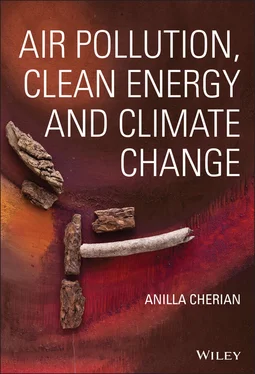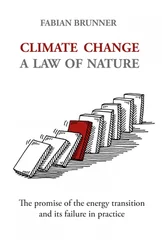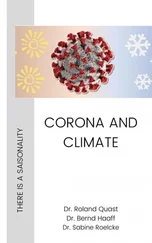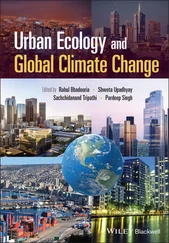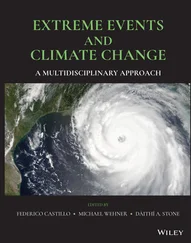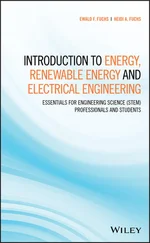Anilla Cherian - Air Pollution, Clean Energy and Climate Change
Здесь есть возможность читать онлайн «Anilla Cherian - Air Pollution, Clean Energy and Climate Change» — ознакомительный отрывок электронной книги совершенно бесплатно, а после прочтения отрывка купить полную версию. В некоторых случаях можно слушать аудио, скачать через торрент в формате fb2 и присутствует краткое содержание. Жанр: unrecognised, на английском языке. Описание произведения, (предисловие) а так же отзывы посетителей доступны на портале библиотеки ЛибКат.
- Название:Air Pollution, Clean Energy and Climate Change
- Автор:
- Жанр:
- Год:неизвестен
- ISBN:нет данных
- Рейтинг книги:5 / 5. Голосов: 1
-
Избранное:Добавить в избранное
- Отзывы:
-
Ваша оценка:
- 100
- 1
- 2
- 3
- 4
- 5
Air Pollution, Clean Energy and Climate Change: краткое содержание, описание и аннотация
Предлагаем к чтению аннотацию, описание, краткое содержание или предисловие (зависит от того, что написал сам автор книги «Air Pollution, Clean Energy and Climate Change»). Если вы не нашли необходимую информацию о книге — напишите в комментариях, мы постараемся отыскать её.
to leave no one behind
Air Pollution, Clean Energy and Climate Change
Energy and Global Climate Change
Air Pollution, Clean Energy and Climate Change — читать онлайн ознакомительный отрывок
Ниже представлен текст книги, разбитый по страницам. Система сохранения места последней прочитанной страницы, позволяет с удобством читать онлайн бесплатно книгу «Air Pollution, Clean Energy and Climate Change», без необходимости каждый раз заново искать на чём Вы остановились. Поставьте закладку, и сможете в любой момент перейти на страницу, на которой закончили чтение.
Интервал:
Закладка:
Innovative forms of NNSA partnerships on curbing air pollution, mitigating SLCPs and increasing access to clean energy for the poor are essential in averting the air pollution catastrophe. The role of NNSAs including cities in driving climate responsive and clean energy actions especially in regions of the world where air pollution threatens lives is undeniable. Chapter 4examines the urgency of urban air pollution by focusing on the linkages between urbanization and PM air pollution. It also discusses the role of cities as the new loci for integrated climate and clean air responsive action and then moves on highlighting the significance of PM pollution for India and Indian cities. India is the third‐largest aggregate GHG emitter, but it has the lowest per capita emissions amongst the top ten leading national GHG emitters, and it has long argued that poverty eradication and equity considerations need to be factored in its climate change response. But now the toxic problem of air pollution threatens future development in India at many levels. The chapter’s conclusion urges the need for cleaner, inclusive and greener future for cities.
Chapter 5delves into the issue of curbing SLCPs as a means to address not just climate change but also health, food and water insecurities experienced primarily in developing countries. Global environmental problems such as climate change are broadly defined as global challenges which cannot be contained within the confines of a state, or a set of adjoining states, and are therefore viewed as requiring multilateral or global responses within the UN. In contrast, air pollution within the UN context has been defined as a transboundary regional problem for the most part. Chapter 5focuses on the importance of curbing SLCPs in particular BC emissions. It also focuses on providing a brief overview of the UN’s only regional air pollution treaty – the CLRTAP a and its Gothenburg Protocol, which is the world’s first protocol aimed at PM 2.5emissions reductions. The idea is to highlight a few key lessons learned and implications for other regions in the world that are faced with the toxic levels of PM pollution. This chapter also focuses on specific measures for curbing SLCPs that have been highlighted by CCAC which endorsed the 2011 recommendations made by UNEP/WMO in their joint integrated assessment. The role of the CCAC as the only globally relevant yet voluntary partnership network that could serve as a model for improving air quality and mitigating SLCPs is also briefly touched upon.
Chapter 6focuses on summarizing that integrated action on the nexus between climate change, air pollution reduction and access to clean energy matters for millions whose voices are not heard in intergovernmental negotiating fora. It further highlights the role of NNSAs such as the private sector by looking at shifts towards low and zero carbon strategies proposed by the CEOs of the two of world’s biggest corporations and asks what if anything fossil‐free divestments mean for clean energy and clean air for the poor? The chapter then provides an overview of the importance of innovative partnership initiatives, modalities and measures that are expressly focused on the reduction of SLCPs. It concludes by providing a brief update on the outcomes of the 2021 COP‐26 (Glasgow) and by arguing that segregated goals/silos on sustainable energy and climate do not enable SLCPs and PM pollution reduction. The absence of integrated and inclusive clean air, clean energy and climate action only worsens the lives of those who already suffer the costs of carbon and air pollution inequities.
References
1 African Development Bank (2003). Poverty and Climate Change: Reducing the Vulnerabilities of the Poor through Adaptation. Paris: OECD.
2 Allen, B. (2004). Global warming‐bulletins from a warmer world: from the editor. National Geographic (September 2004).
3 Arora, N. (2021). New Delhi is World’s Most Polluted Capital for Third Straight Year – IQAir Study. Reuters. https://www.reuters.com/article/us‐india‐pollution/new‐delhi‐is‐worlds‐most‐polluted‐capital‐for‐third‐straight‐year‐iqair‐study‐idUSKBN2B817F. (accessed 20 April 2021).
4 Baumgartner, F. et al. (2009). Lobbying and Policy Change: Who Wins, Who Loses, and Why. Chicago: University of Chicago Press.
5 Bazilian, M. et al. (2010). Understanding the scale of investment for universal energy access. Geopolitics of Energy (Special Issue: Energy Poverty and Development) 32 (10): 21–42.
6 Bernard, L. and Semmler, W. (ed.) (2015). The Oxford Handbook of the Macroeconomics of Global Warming. London: Oxford University Press.
7 Booth, W. and Stevens, H. (2021), COP26 in Glasgow may have a record carbon footprint, despite low flush loos and veggie haggis. Washington Post (12 November 2021). https://www.washingtonpost.com/world/2021/11/12/cop26‐carbon‐emissions‐offsets/(accessed 21 November 2021).
8 Bond, T.C. et al. (2013). Bounding the role of black carbon in the climate system: a scientific assessment. Journal of Geophysical Research: Atmospheres 118: 5380–5552. https://doi.org/10.1002/jgrd.50171(accessed 20 April 2021).
9 Brulle, R. (2018). The climate lobby: a sectoral analysis of lobbying spending on climate change in the USA, 2000–2016. Climatic Change 149: 289–303. https://link.springer.com/article/10.1007/s10584‐018‐2241‐z(accessed 27 February 2021).
10 Bullard, R.D. and Wright, B. (2009). Race, Place and Environmental Justice after Hurricane Katrina. Philadelphia: Westview Press.
11 Burnett, R. et al. (2018). Global estimates of mortality associated with long‐term exposure to outdoor fine particulate matter. Proceedings of the National Academy of Sciences of the United States of America (PNAS) 115 (38): 9592–9597. https://www.pnas.org/content/115/38/9592(accessed 27 February 2021).
12 CCAC (2021). Who we are and What are Short –Lived Climate Pollutants. http://ccacoalition.org/en/content/who‐we‐are; https://www.ccacoalition.org/en/content/short‐lived‐climate‐pollutants‐slcps(accessed 20 April 2021).
13 Chasek, P. et al. (2017). Global Environmental Politics. New York: Routledge.
14 Cherian, A. (2012). Grapping with the Global Climate Challenge. In: Global Environmental Issues (ed. F. Harris). Chichester: Wiley‐Blackwell.
15 Cherian, A. (2015). Energy and Global Climate Change: Bridging the Sustainable Development Divide. Oxford: Wiley Blackwell.
16 Chin, N.C. (2019). A ‘life and death matter’: Singapore could spend US$72b on climate adaptation over next century. Eco‐Business (20 August 2019). https://www.eco‐business.com/news/a‐life‐and‐death‐matter‐singapore‐could‐spend‐us72b‐on‐climate‐adaptation‐over‐next‐century(accessed 1 March 2021).
17 Ciplet et al. (2015). Power in Warming World: The New Global Politics of Climate Change and the Remaking of Environmental Inequality. Cambridge (MA): MIT Press.
18 Cohen, A.J. et al. (2017). Estimates and 25‐year trends of the global burden of disease attributable to ambient air pollution: an analysis of data from the Global Burden of Diseases Study 2015. Lancet 389: 1907–1918.
19 Cursino, M. and Faulkner, D. (2021). COP26: China and India must explain themselves, says Sharma. BBC News (14 November 2021). https://www.bbc.com/news/uk‐59280241(accessed 22 November 2021).
20 Davidson, J. (2019). Google camp on climate crisis attended by rich and famous in private jets and mega yachts. Ecowatch (2 August 2019). https://www.ecowatch.com/google‐camp‐climate‐crisis‐2639622926.html(accessed 24 January 2021).
21 Dettori, M. et al. (2021). Air pollution and the risk of death due to COVID‐19 in Italy. Environmental Research 192: https://www.sciencedirect.com/science/article/pii/S0013935120313566(accessed 2 April 2021).
Читать дальшеИнтервал:
Закладка:
Похожие книги на «Air Pollution, Clean Energy and Climate Change»
Представляем Вашему вниманию похожие книги на «Air Pollution, Clean Energy and Climate Change» списком для выбора. Мы отобрали схожую по названию и смыслу литературу в надежде предоставить читателям больше вариантов отыскать новые, интересные, ещё непрочитанные произведения.
Обсуждение, отзывы о книге «Air Pollution, Clean Energy and Climate Change» и просто собственные мнения читателей. Оставьте ваши комментарии, напишите, что Вы думаете о произведении, его смысле или главных героях. Укажите что конкретно понравилось, а что нет, и почему Вы так считаете.
